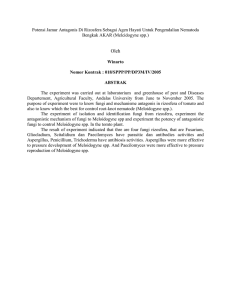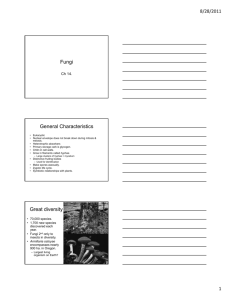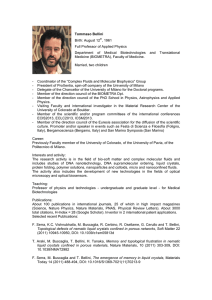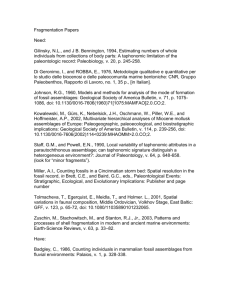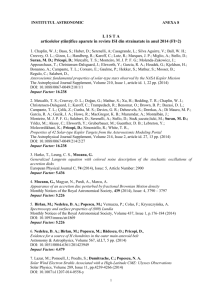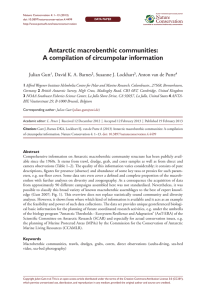file - BioMed Central
advertisement
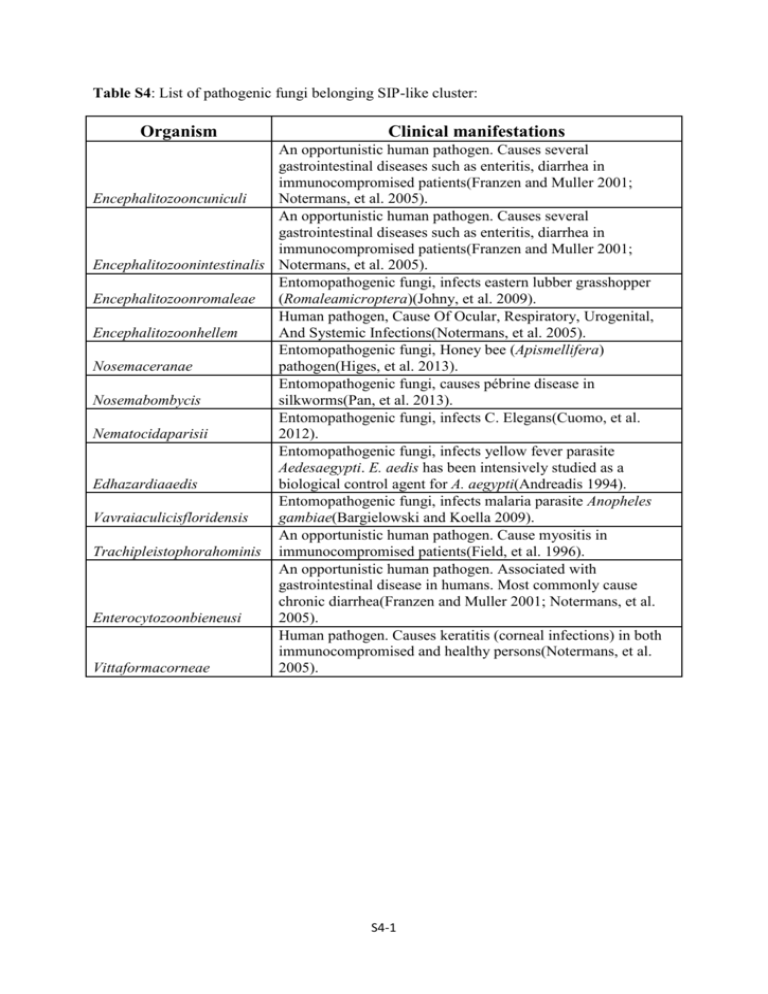
Table S4: List of pathogenic fungi belonging SIP-like cluster: Organism Clinical manifestations An opportunistic human pathogen. Causes several gastrointestinal diseases such as enteritis, diarrhea in immunocompromised patients(Franzen and Muller 2001; Encephalitozooncuniculi Notermans, et al. 2005). An opportunistic human pathogen. Causes several gastrointestinal diseases such as enteritis, diarrhea in immunocompromised patients(Franzen and Muller 2001; Encephalitozoonintestinalis Notermans, et al. 2005). Entomopathogenic fungi, infects eastern lubber grasshopper Encephalitozoonromaleae (Romaleamicroptera)(Johny, et al. 2009). Human pathogen, Cause Of Ocular, Respiratory, Urogenital, Encephalitozoonhellem And Systemic Infections(Notermans, et al. 2005). Entomopathogenic fungi, Honey bee (Apismellifera) Nosemaceranae pathogen(Higes, et al. 2013). Entomopathogenic fungi, causes pébrine disease in Nosemabombycis silkworms(Pan, et al. 2013). Entomopathogenic fungi, infects C. Elegans(Cuomo, et al. Nematocidaparisii 2012). Entomopathogenic fungi, infects yellow fever parasite Aedesaegypti. E. aedis has been intensively studied as a Edhazardiaaedis biological control agent for A. aegypti(Andreadis 1994). Entomopathogenic fungi, infects malaria parasite Anopheles Vavraiaculicisfloridensis gambiae(Bargielowski and Koella 2009). An opportunistic human pathogen. Cause myositis in Trachipleistophorahominis immunocompromised patients(Field, et al. 1996). An opportunistic human pathogen. Associated with gastrointestinal disease in humans. Most commonly cause chronic diarrhea(Franzen and Muller 2001; Notermans, et al. Enterocytozoonbieneusi 2005). Human pathogen. Causes keratitis (corneal infections) in both immunocompromised and healthy persons(Notermans, et al. Vittaformacorneae 2005). S4-1 References: Andreadis TG 1994. Host range tests with Edhazardia aedis (Microsporida: Culicosporidae) against northern Nearctic mosquitoes. J Invertebr Pathol 64: 46-51. doi: 10.1006/jipa.1994.1067 Bargielowski I, Koella JC 2009. A possible mechanism for the suppression of Plasmodium berghei development in the mosquito Anopheles gambiae by the microsporidian Vavraia culicis. PLoS One 4: e4676. doi: 10.1371/journal.pone.0004676 Cuomo CA, Desjardins CA, Bakowski MA, Goldberg J, Ma AT, Becnel JJ, Didier ES, Fan L, Heiman DI, Levin JZ, Young S, Zeng Q, Troemel ER 2012. Microsporidian genome analysis reveals evolutionary strategies for obligate intracellular growth. Genome Res 22: 2478-2488. doi: 10.1101/gr.142802.112 Field AS, Marriott DJ, Milliken ST, Brew BJ, Canning EU, Kench JG, Darveniza P, Harkness JL 1996. Myositis associated with a newly described microsporidian, Trachipleistophora hominis, in a patient with AIDS. J Clin Microbiol 34: 2803-2811. Franzen C, Muller A 2001. Microsporidiosis: human diseases and diagnosis. Microbes Infect 3: 389400. Higes M, Meana A, Bartolome C, Botias C, Martin-Hernandez R 2013. Nosema ceranae (Microsporidia), a controversial 21st century honey bee pathogen. Environ Microbiol Rep 5: 17-29. doi: 10.1111/1758-2229.12024 Johny S, Larson TM, Solter LF, Edwards KA, Whitman DW 2009. Phylogenetic characterization of Encephalitozoon romaleae (Microsporidia) from a grasshopper host: relationship to Encephalitozoon spp. infecting humans. Infect Genet Evol 9: 189-195. doi: 10.1016/j.meegid.2008.10.010 Notermans DW, Peek R, de Jong MD, Wentink-Bonnema EM, Boom R, van Gool T 2005. Detection and identification of Enterocytozoon bieneusi and Encephalitozoon species in stool and urine specimens by PCR and differential hybridization. J Clin Microbiol 43: 610-614. doi: 10.1128/JCM.43.2.610-614.2005 Pan G, Xu J, Li T, Xia Q, Liu SL, Zhang G, Li S, Li C, Liu H, Yang L, Liu T, Zhang X, Wu Z, Fan W, Dang X, Xiang H, Tao M, Li Y, Hu J, Li Z, Lin L, Luo J, Geng L, Wang L, Long M, Wan Y, He N, Zhang Z, Lu C, Keeling PJ, Wang J, Xiang Z, Zhou Z 2013. Comparative genomics of parasitic silkworm microsporidia reveal an association between genome expansion and host adaptation. BMC Genomics 14: 186. doi: 10.1186/1471-2164-14-186 S4-2
